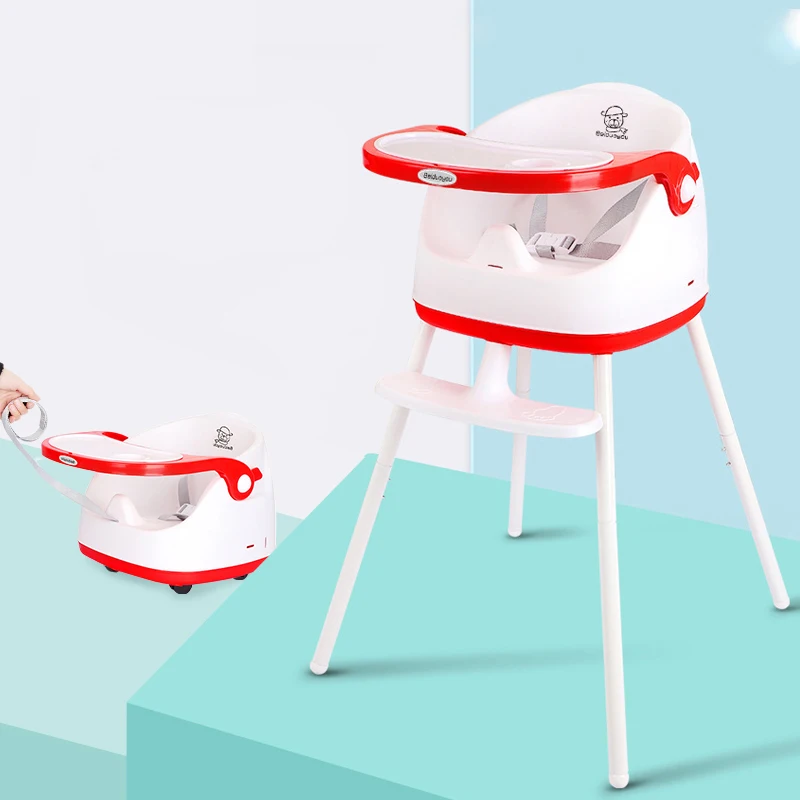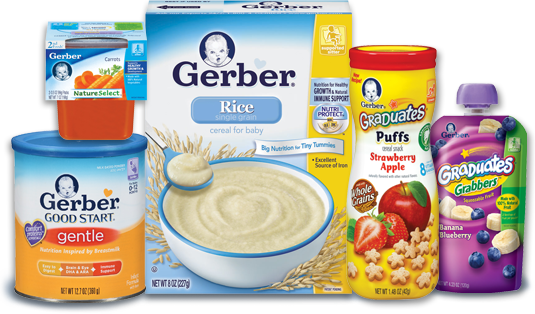Stool softener foods for baby
Are There Baby Foods that Help with Constipation?
While parenting brings many surprises, one of them is likely how much you’ll think about poop, or lack thereof, especially during that first year. But here you are worrying about your baby’s digestive tract and convinced that they’re constipated.
If you’ve recently introduced your baby to solid food, then your worries may be on target: solid foods can put a strain on your baby’s developing digestive tract and cause constipation. But there are things you can do to help!
Before you begin treating constipation you should determine if there is really an issue at all. So here’s the scoop on poop and how to tell if your worries are founded and your baby is constipated.
Breastfed babies
During the first few weeks, you’ll find yourself changing diapers with alarming regularity. Figure in every feed or so.
But don’t despair, because by the time your baby reaches 6 weeks old, they may have a bowel movement only once or twice a day. On the other hand, they may have one only every 7–10 days. (Yep, the frequency really can vary that much.)
The poop is yellow, soft, runny and sometimes lumpy and the smell isn’t unpleasant.
Formula-fed babies
A newborn, formula-fed baby typically poops up to five times a day. At about 6 to 8 weeks, this may decrease to around once a day.
Formula-fed babies have poop that is a camel to brown color with a thicker consistency, more like paste. Most likely, the less-than-aromatic smell means you’ll hermetically seal soiled diapers before you toss them into the garbage.
Signs that your baby is constipated
You’ve noticed that your baby’s tummy isn’t following the schedule that you got used to. Could it be constipation? Here are the signs that could confirm your suspicions:
- You notice that they cry or fuss while they’re trying to have a hard bowel movement.
- The poop, when it does come, is like hard pellets.
- You notice streaks of red blood in the hard poop.
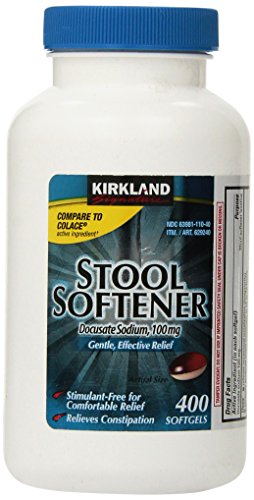
While it’s not easy for a baby on a liquid diet to become constipated, trouble can start when you start introducing your baby to solid foods at around 6 months. Here’s why:
New food types
Think of it as a learning curve: Your baby’s body is learning how to cope with a new kind of food to digest as they move away from their full liquid diet and you need to soften the learning curve. (Pardon the irresistible pun.)
Changes to fluid intake
Decreased fluids will make your baby’s poop harder and more difficult to push out. If they’ve started solids, they may need to up their fluid intake to offset the solid food. And if your baby is teething or feeling unwell, it can also lead to them taking in less fluid than usual.
Lack of fiber
Even though they’re just starting out, babies’ tummies work like ours. While initially the move to solids that have fiber (from breast milk or formula, which don’t) can cause temporary constipation, their tummies will adjust.
Make sure to monitor your baby’s fiber intake and pair it with plenty of hydration for a smooth ride the same way that you monitor yours.
OK, so you’ve confirmed that your baby is constipated. The next step is helping to alleviate the strain on their developing digestive system.
Remember that you can keep offering these foods as your baby develops into a toddler and beyond. In fact, there is little research or evidence to support specific foods (including high fiber ones) in treating or preventing constipation in infants. Most of these recommendations are based on evidence for older adults and children.
Keep in mind that good practice when introducing solids is to introduce foods as single ingredients. That way, if your baby is allergic to certain foods, you’ll be able to more easily trace the source.
If your little one hasn’t tried these foods before, don’t rush the process. Test out one at a time and then introduce combinations once you’re confident they’re well tolerated.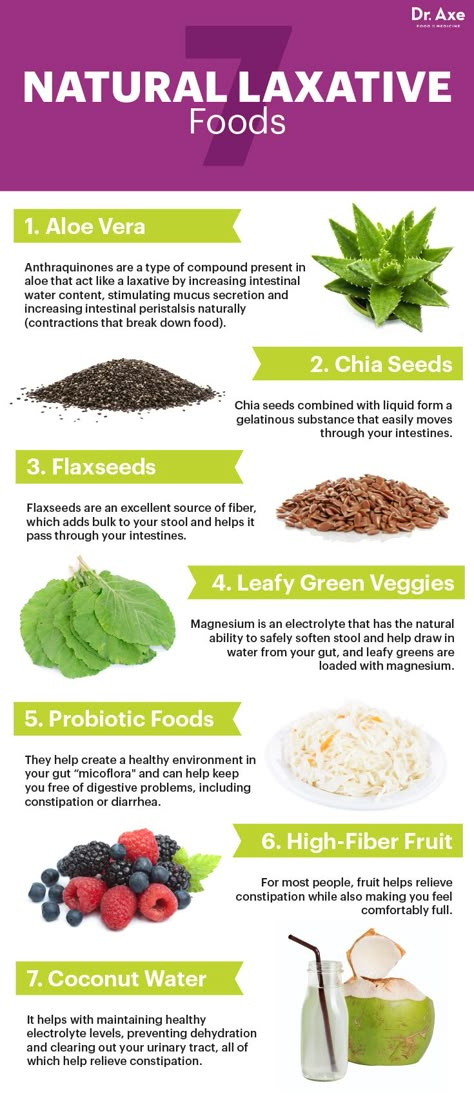
- Back to basics. Give your baby’s digestive tract a break by feeding them mashed avocado or sweet potato purée. These are easy to digest and may give your baby the kick start they need.
- B vegetables. Think broccoli, Brussels sprouts, and beans. Purée these for a meal filled with fiber.
- P fruits. Your grandmother was right — bring on the prunes for quick work. A purée that includes a mix of prunes plus pears, plums, or peaches should work magic. Try subbing the prunes with dates for a change.
- Bring on the fiber. If your baby is over 8 months, you can offer them whole grains like oatmeal, fiber-rich cereals, whole wheat pasta, and brown rice.
- Water intake. Until 6 months an exclusively breastfed or formula-fed baby doesn’t need to drink water. Above this age, you can introduce small amounts of water.
Plums and pears with cinnamon
Cut 2 or 3 pears and plums into small pieces. Place in a saucepan with a small amount of water and simmer until soft. Add in a sprinkle of cinnamon. Blend thoroughly.
Place in a saucepan with a small amount of water and simmer until soft. Add in a sprinkle of cinnamon. Blend thoroughly.
Sweet potato with apple and peach
Cut half a sweet potato, one apple, and half a peach into small pieces. Place in steamer basket and cook until tender. Blend until smooth.
Spinach and apple purée
Chop two apples into small chunks and cook in saucepan with about 1/2 cup of water. When they’re tender, add about 1 cup of spinach and cook another 2 to 3 minutes. Purée until smooth. Can be seasoned with cinnamon and ginger.
Some sources suggest prune, pear, and apple juices help to increase the water content in poop and can ease constipation.
However, the American Academy of Pediatrics recommends steering clear of fruit juice for children younger than 1 year old. You can stick with these fruits as purées for similar effects.
What is it about prune juice? The high levels of sorbitol and phenolic substances in prune juice and dried plums act as a laxative and diuretic properties. So if your child is over 1 year old, you can use small amounts of prune juice to encourage their system to run.
So if your child is over 1 year old, you can use small amounts of prune juice to encourage their system to run.
Some studies show that constipation may affect as much as 30 percent of children. If your child is part of the unlucky statistic, here are some foods that you may want to give them smaller amounts of until it passes:
- bananas
- dairy products such as cheese and yogurt
- low fiber foods like white rice, white bread, and white pasta
If you’re like most parents, you’ll be up for whatever you can try to help your baby get comfortable fast. Here are a few tricks that you can use to ease your baby’s constipation:
- Warm baths. These can relax those abdominal muscles and get them working.
- Exercise. Lay your baby on their back and push their legs alternately as if they’re cycling a bike. Alternatively, hold their knees and feet together and push their feet towards their belly.
- Massage.
 Use your fingertip to draw clockwise circles on your baby’s stomach.
Use your fingertip to draw clockwise circles on your baby’s stomach.
If you see that despite your home remedies, your baby still is having hard stools or hasn’t pooped after 2 or 3 days from their last hard stool, then contact your pediatrician. Especially if you consistently notice blood in their poop or your baby is extremely irritable and appears to be in pain.
While dealing with your baby’s toilet issues may seem a tad unsavory, you’ll soon be so used to it, that you’ll find yourself sharing your insights over coffee with other parents. And don’t be shy about sharing the yummy food combinations you discover to keep things moving.
Are There Baby Foods that Help with Constipation?
While parenting brings many surprises, one of them is likely how much you’ll think about poop, or lack thereof, especially during that first year. But here you are worrying about your baby’s digestive tract and convinced that they’re constipated.
If you’ve recently introduced your baby to solid food, then your worries may be on target: solid foods can put a strain on your baby’s developing digestive tract and cause constipation. But there are things you can do to help!
But there are things you can do to help!
Before you begin treating constipation you should determine if there is really an issue at all. So here’s the scoop on poop and how to tell if your worries are founded and your baby is constipated.
Breastfed babies
During the first few weeks, you’ll find yourself changing diapers with alarming regularity. Figure in every feed or so.
But don’t despair, because by the time your baby reaches 6 weeks old, they may have a bowel movement only once or twice a day. On the other hand, they may have one only every 7–10 days. (Yep, the frequency really can vary that much.)
The poop is yellow, soft, runny and sometimes lumpy and the smell isn’t unpleasant.
Formula-fed babies
A newborn, formula-fed baby typically poops up to five times a day. At about 6 to 8 weeks, this may decrease to around once a day.
Formula-fed babies have poop that is a camel to brown color with a thicker consistency, more like paste. Most likely, the less-than-aromatic smell means you’ll hermetically seal soiled diapers before you toss them into the garbage.
Most likely, the less-than-aromatic smell means you’ll hermetically seal soiled diapers before you toss them into the garbage.
Signs that your baby is constipated
You’ve noticed that your baby’s tummy isn’t following the schedule that you got used to. Could it be constipation? Here are the signs that could confirm your suspicions:
- You notice that they cry or fuss while they’re trying to have a hard bowel movement.
- The poop, when it does come, is like hard pellets.
- You notice streaks of red blood in the hard poop.
While it’s not easy for a baby on a liquid diet to become constipated, trouble can start when you start introducing your baby to solid foods at around 6 months. Here’s why:
New food types
Think of it as a learning curve: Your baby’s body is learning how to cope with a new kind of food to digest as they move away from their full liquid diet and you need to soften the learning curve. (Pardon the irresistible pun. )
)
Changes to fluid intake
Decreased fluids will make your baby’s poop harder and more difficult to push out. If they’ve started solids, they may need to up their fluid intake to offset the solid food. And if your baby is teething or feeling unwell, it can also lead to them taking in less fluid than usual.
Lack of fiber
Even though they’re just starting out, babies’ tummies work like ours. While initially the move to solids that have fiber (from breast milk or formula, which don’t) can cause temporary constipation, their tummies will adjust.
Make sure to monitor your baby’s fiber intake and pair it with plenty of hydration for a smooth ride the same way that you monitor yours.
OK, so you’ve confirmed that your baby is constipated. The next step is helping to alleviate the strain on their developing digestive system.
Remember that you can keep offering these foods as your baby develops into a toddler and beyond. In fact, there is little research or evidence to support specific foods (including high fiber ones) in treating or preventing constipation in infants. Most of these recommendations are based on evidence for older adults and children.
Most of these recommendations are based on evidence for older adults and children.
Keep in mind that good practice when introducing solids is to introduce foods as single ingredients. That way, if your baby is allergic to certain foods, you’ll be able to more easily trace the source.
If your little one hasn’t tried these foods before, don’t rush the process. Test out one at a time and then introduce combinations once you’re confident they’re well tolerated.
- Back to basics. Give your baby’s digestive tract a break by feeding them mashed avocado or sweet potato purée. These are easy to digest and may give your baby the kick start they need.
- B vegetables. Think broccoli, Brussels sprouts, and beans. Purée these for a meal filled with fiber.
- P fruits. Your grandmother was right — bring on the prunes for quick work. A purée that includes a mix of prunes plus pears, plums, or peaches should work magic.
 Try subbing the prunes with dates for a change.
Try subbing the prunes with dates for a change. - Bring on the fiber. If your baby is over 8 months, you can offer them whole grains like oatmeal, fiber-rich cereals, whole wheat pasta, and brown rice.
- Water intake. Until 6 months an exclusively breastfed or formula-fed baby doesn’t need to drink water. Above this age, you can introduce small amounts of water.
Plums and pears with cinnamon
Cut 2 or 3 pears and plums into small pieces. Place in a saucepan with a small amount of water and simmer until soft. Add in a sprinkle of cinnamon. Blend thoroughly.
Sweet potato with apple and peach
Cut half a sweet potato, one apple, and half a peach into small pieces. Place in steamer basket and cook until tender. Blend until smooth.
Spinach and apple purée
Chop two apples into small chunks and cook in saucepan with about 1/2 cup of water. When they’re tender, add about 1 cup of spinach and cook another 2 to 3 minutes. Purée until smooth. Can be seasoned with cinnamon and ginger.
Purée until smooth. Can be seasoned with cinnamon and ginger.
Some sources suggest prune, pear, and apple juices help to increase the water content in poop and can ease constipation.
However, the American Academy of Pediatrics recommends steering clear of fruit juice for children younger than 1 year old. You can stick with these fruits as purées for similar effects.
What is it about prune juice? The high levels of sorbitol and phenolic substances in prune juice and dried plums act as a laxative and diuretic properties. So if your child is over 1 year old, you can use small amounts of prune juice to encourage their system to run.
Some studies show that constipation may affect as much as 30 percent of children. If your child is part of the unlucky statistic, here are some foods that you may want to give them smaller amounts of until it passes:
- bananas
- dairy products such as cheese and yogurt
- low fiber foods like white rice, white bread, and white pasta
If you’re like most parents, you’ll be up for whatever you can try to help your baby get comfortable fast. Here are a few tricks that you can use to ease your baby’s constipation:
Here are a few tricks that you can use to ease your baby’s constipation:
- Warm baths. These can relax those abdominal muscles and get them working.
- Exercise. Lay your baby on their back and push their legs alternately as if they’re cycling a bike. Alternatively, hold their knees and feet together and push their feet towards their belly.
- Massage. Use your fingertip to draw clockwise circles on your baby’s stomach.
If you see that despite your home remedies, your baby still is having hard stools or hasn’t pooped after 2 or 3 days from their last hard stool, then contact your pediatrician. Especially if you consistently notice blood in their poop or your baby is extremely irritable and appears to be in pain.
While dealing with your baby’s toilet issues may seem a tad unsavory, you’ll soon be so used to it, that you’ll find yourself sharing your insights over coffee with other parents. And don’t be shy about sharing the yummy food combinations you discover to keep things moving.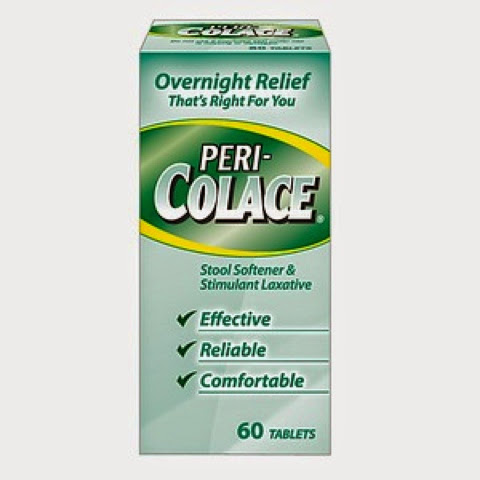
Products that prevent constipation and improve digestion
In developed countries, up to 20% of the population suffers from constipation. In the last article on this topic, we talked about what constipation is and what are the most common causes of constipation. In this material, we understand why you should not immediately take constipation remedies, but it is better to first pay attention to your diet.
If you or someone you love has occasional or regular problems with bowel movements, read on. You will learn about healthy products that help you go to the toilet in a natural way. nine0005
If constipation lasts for weeks or is accompanied by pain, blood and mucus in the stool, and other unpleasant symptoms, see a doctor.
Contents
- 1. How different types of fiber affect bowel movement
- 2. Soups: more water and fiber
- 3. Fermented Foods - Gut Probiotics
- 4. Fruit with stones against constipation
- 5.
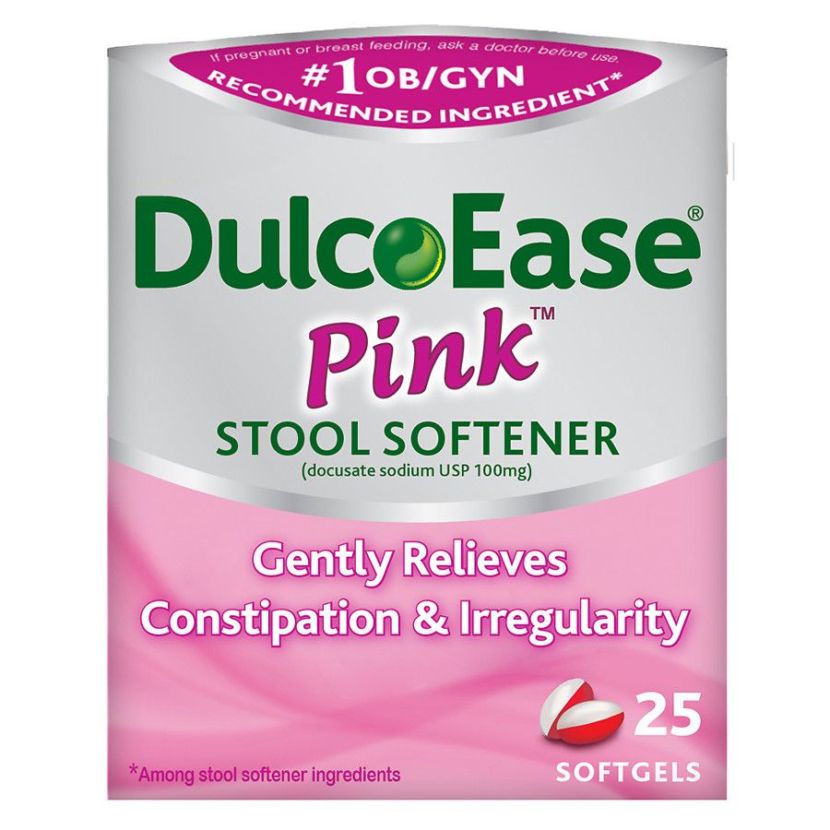 Whole grains and bran
Whole grains and bran - 6. Legumes in the fight against constipation
- 7. Seeds for Better Digestion
- 8. How to eat fiber properly
- 9. Important note
How different types of fiber affect bowel movement
Photo by Ella Olsson / UnsplashFiber, or plant fiber, helps to make stools regular and feeds good gut bacteria. It comes in soluble and insoluble forms, and both types are equally important for healthy digestion.
The human body is unable to digest fiber. The gut bacteria do it for us. nine0037Soluble fiber absorbs liquid and forms a gel-like substance that facilitates the movement of feces through the gastrointestinal tract. It also creates a feeling of fullness.
Microbiota Test Atlas helps you understand how bacteria do this. Based on the results of the test, every week you will receive a list of products to improve the functioning of your microbiota.
Soluble Fiber absorbs liquid and forms a gel-like substance that facilitates the passage of stool through the digestive tract.
It also creates a feeling of fullness. Foods rich in fiber of this type include apples, oatmeal, citrus fruits. nine0005 Photo by Andre Taissin / Unsplash
Insoluble fiber adds bulk to the stool and stimulates intestinal receptors to speed up stool elimination. Insoluble dietary fiber also retains water and prevents feces from turning into a dry, lumpy mass. This type of dietary fiber is found in plants of the legume family, nuts, and potatoes.
Photo by Maddi Bazzocco / UnsplashSoups: more water and fiber
The high fiber and liquid content of vegetable soups makes them an excellent and affordable tool for solving problems with the gastrointestinal tract. The main thing is not to digest vegetables so that the fiber does not lose its beneficial properties. nine0005 Photo by Gianluca Gerardi / Unsplash
Milk and cream soups can cause bloating and make you feel bad. For thicker, more textured soups, and to avoid GI side effects, opt for recipes with potatoes.
The starch it contains will give the soup a creamy texture.
Fermented foods - probiotics for the intestines
Fermented foods such as kefir or sauerkraut, are rich in beneficial probiotics - lactic acid bacteria Lactobacillus and Bifidobacterium. In the intestines, such bacteria resist dysbacteriosis and produce short-chain fatty acids that maintain mucosal health and normal peristalsis. nine0005
There is little or no lactose in fermented foods, so people with lactose intolerance don't have to worry about stomach discomfort. If a slight seething after their use nevertheless appeared, the reason is more likely in the probiotic effect than in intolerance. This means that the intestinal bacteria are working hard on the breakdown of fiber, while releasing gases.
Photo by little plant / UnsplashIf the sour taste and smell of kefir repels you, try other fermented dairy products, such as Greek yogurt, fermented baked milk, acidophilus.

Available probiotics for vegans are kombucha, kimchi, sauerkraut and other fermented vegetables, miso paste, cashew or soy based yogurt.
With the Atlas Microbiota Test, you can check the bacterial composition of your gut and understand which prebiotics and probiotics are right for you.
Fruit with stones against constipation
These juicy and fibrous fruits will quickly help to improve digestion in a natural way. Some fruits with stones also contain sorbitol, which has a mild laxative effect.
Apricots, plums, peaches, nectarines are considered the most effective against constipation.Photo by Elena Mozhvilo / UnsplashIf the fresh fruit season is over, you can limit yourself to prunes and dried apricots. It is important to always drink dried fruits with water - if you eat them dry on the go, this will only worsen the condition.
Whole grains and bran
Untreated grain retains the outer shell, endosperm and germ.
Photo by Christopher Alvarenga / UnsplashSuch grains contain a maximum of nutrients and fiber, so for chronic constipation, whole grains and bran (separated grain shells) should be included in the diet.
Products include:
- whole grain toast for breakfast;
- bran porridge;
- whole grain crackers for snacking;
- brown rice for garnish. nine0014
If you don't like the taste of brown rice, you can buy a mixture of regular brown rice. As for flax crackers, such a snack is not suitable for everyone - dense raw grains may not be digested at all.
Legumes in the fight against constipation
Lentils, chickpeas and beans from the legume family contain a lot of fiber - this is what causes flatulence in many people. In order for this fiber to benefit, you need to add legumes in small portions of to the diet and focus on your well-being. In any case, gas is rather a positive sign, which indicates that the intestinal bacteria have something to eat.
nine0005 Photo by engin akyurt / Unsplash
Before cooking, it is recommended to soak legumes in advance for several hours or even overnight in cold water. Canned chickpeas and beans are easier to digest because some of the "gas-forming" substances go into a liquid that can be drained.
You can also buy legume sprouts or get them yourself - they are also easier to digest. The spice asafoetida has been shown to reduce bloating after legumes, according to some studies. nine0005
Regular Digestion Seeds
Chia Seeds is a trending source of soluble fiber. They also need to be diluted with water or added to cereals, smoothies, yogurts. Chia pudding or chia yogurt is a light breakfast or dessert option that will help keep the moisture in your stool and add the viscosity you need.
Photo by Ash Edmonds / UnsplashPsyllium Husk is sold dry as a natural remedy for constipation. It has a neutral taste and smells almost nothing.
When diluted with water, the husk forms mucus, which is necessary for the formation of healthy stools. nine0005
More affordable soluble fiber - flax seeds . They are recommended for irritable bowel syndrome, chronic constipation and type 2 diabetes . Seeds need to be soaked in water overnight to get that gel-like texture. If you don’t want to wait, you can buy flaxseed porridge in the form of an instant mix.
How to eat fiber properly
Insoluble fiber must be chewed thoroughly and for a long time , otherwise coarse particles will irritate the esophagus and intestines. If it takes you longer to eat a salad than a main course, that's perfectly fine. The better you chew, the better this food will be absorbed and digested. nine0005 Photo by Yoav Aziz / Unsplash
It is important to drink plenty of fluids. If fiber has nowhere to absorb water, it won't work as a natural laxative.
If you have never eaten a lot of fruits and vegetables, start with small portions and give your microbiota time to get used to the new diet.
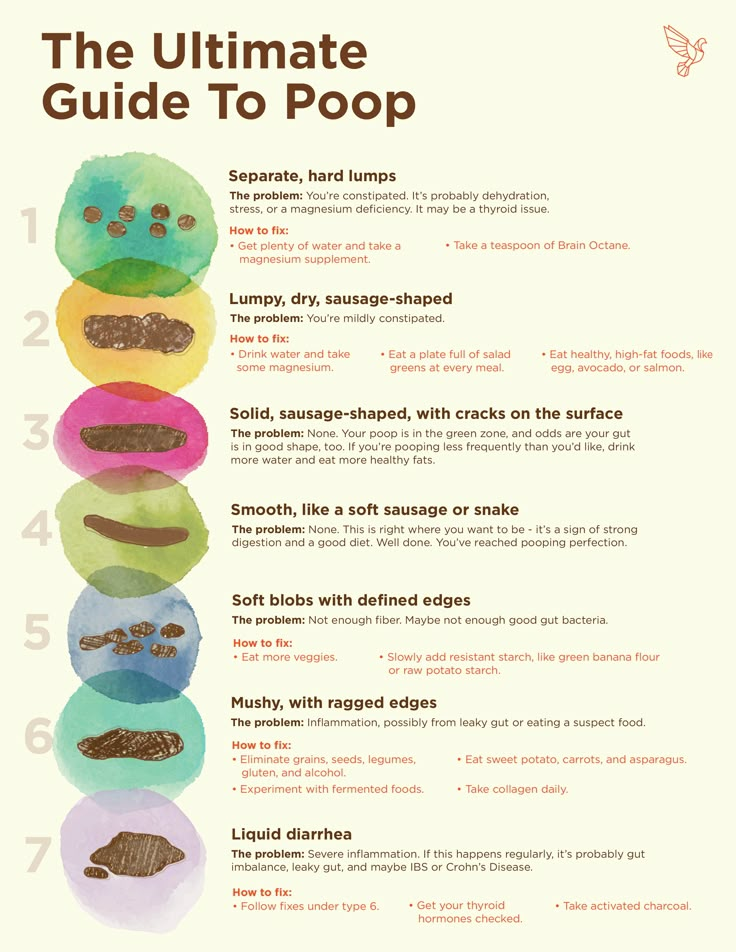
There are several signs that you may be eating too much fiber. These are:
- bloating of the lower abdomen, distension and flatulence;
- Loose, unformed stools with clearly visible undigested fibers.
Highlights
- A proper diet that includes soups, fermented and whole grains, and various types of fiber can help you improve your bowel movements.
- It is important to remember to drink plenty of water throughout the day. Sugary drinks and coffee do not replace water.
- You can find out what nutrients and dietary fiber your bacteria are missing by taking the Atlas Microbiota Test. You will receive personalized and understandable recommendations that will help improve the functioning of the microbiota and improve digestion. nine0014
- National Health Service, Constipation, Causes of constipation
- National Health Service, Constipation, About constipation, 2020
- Min Chen et al.
, Modulatory Effects of Gut Microbiota on Constipation: The Commercial Beverage Yakult Shapes Stool Consistency, 2019
- Compound Interest, The Chemistry of Plums & Prunes: Constipation & Chewing Gum, 2015
- Harvard School of Public Health, Food features
- U.S. National Institute of Health, Graham DY et al, The effect of bran on bowel function in constipation, 1982
- Gastrojournal, R. S. Fisher, M.D., Bran as therapy in constipation, 1983
- International Foundation for Functional Gastrointestinal Disorders
- R&D Centre, Aurea Biolabs Pvt Ltd, Kolenchery, Cochin, India, Augustine Amalraj and Sreeraj Gopi, Biological activities and medicinal properties of Asafoetida: A review, 2017
- Noureddin Soltanian and Mohsen Janghorbani, A randomized trial of the effects of flaxseed to manage constipation, weight, glycemia, and lipids in constipated patients with type 2 diabetes, 2018
What foods contain fiber and how to increase its proportion in the diet
Fiber, fibers or complex carbohydrates are compounds that the body cannot digest.
However, we need them for the health and proper functioning of the body. Fiber is food for intestinal bacteria. And when we take care of them, they take care of us.
We tell you what foods contain fiber and how to increase its share in the diet.
Underestimated fiber
When we think about proper nutrition, we first of all think about proteins, fats, carbohydrates, calories, vitamins and minerals, but not about fiber. At the same time, dietary fiber is equally important for health and well-being. Fiber reaches the intestine unchanged, where it is broken down by intestinal bacteria.
The more different types of fibers a person consumes, the more diverse and protected his microbiota. This composition of the bacteria produces fatty acids and supports the immune system, taking care of both its community and the human intestine. nine0005
Fiber helps the body regulate glucose levels and form stools.Studies show that people who consume 25-29 grams of fiber per day have a 15-30% lower risk of heart and vascular disease, diabetes, and colon cancer.

There is also evidence that a diet rich in fiber reduces the risk of depression. Scientists suggest that this is due to the inflammatory process, which occurs, among other things, due to a poor diet with a small amount of dietary fiber. nine0005
Find out about the ability of the microbiota to break down dietary fiber by taking the Atlas Microbiota Test.
How much fiber to eat per day
In order to benefit and protect our body, intestinal bacteria must receive enough fiber. Therefore, one apple a day will not help if the rest of the meals contain only simple carbohydrates, proteins or fats.
The US National Academy of Medicine recommends a minimum of 38 grams of fiber for men and 25 grams for women. The UK National Health Service states that adults should consume at least 30 grams of fiber, regardless of gender. nine0005
Atlas experts believe that 30 grams of fiber per day is the optimal amount for maintaining health. If you eat three meals a day, each meal should contain about 10 grams of fiber.

What foods contain fiber
Fiber is found in foods of plant origin: fruits, berries, vegetables, cereals, cereals, legumes, nuts and seeds. Let's talk about different groups of foods with fiber.
How do you know how much fiber is in a food? nine0046
Look for Dietary fiber or simply Fiber on imported packages. On locally produced products, the amount of fiber is indicated less often.Generally information is given on the total carbohydrate content. And how much of the share falls on dietary fiber is difficult to find out. You can check the fiber content on websites that provide information on the nutritional value of products. For example, on the site Nutrition Self.
Fruits, vegetables and berries
Fresh or cooked vegetables, fruits and berries are a good way not only to diversify your diet and increase your fiber intake, but also to get the necessary vitamins, minerals and polyphenols, which also contribute to the health of the body.
nine0005
Fruits and berries can be added to breakfasts and used as a healthy snack, and vegetables will be a good addition to lunches and dinners. They can be steamed, stewed, baked or fried.
The amount of fiber does not depend on the preparation method.Heat treatment does not affect most fibers. However, it is worth remembering that juice, even freshly squeezed with pulp, contains practically no fiber, so you should give preference to whole fruits and vegetables. nine0005
Cooking can increase the amount of fiber by reducing the size of the food itself. For example, a half cup of boiled spinach contains 2.2 grams of fiber, while fresh spinach has 0.8. In the first case, due to the reduction in the size of the product, you can eat more of it and get more fiber.
If possible, do not get rid of the skins on vegetables and fruits. A jacket potato contains 5 grams of fiber, and without - 2. An apple with a skin contains 3.7 grams of fiber, and without - 2.
4.
Below we have given a small table on the amount of fiber in different vegetables, fruits and berries.
Product Portion grams of fiber Avocado 1 medium 10 Artichoke 1 medium 6.2 Raspberry 1 cup 8.4 Pear 1 medium nine0268 4Banana 1 medium 2.7 Orange 1 medium 3 Tomato 1 medium 1 Pumpkin 1/2 cup 5 Broccoli 1/2 cup 2.3 Strawberry 1 cup 3.4
Cereals and whole grain products
Cereals consist of whole or broken grains of various crops.
It is a good source of fiber and is also easy to prepare. Cereals are easy enough to cook and add salt and spices to taste.
Some grits are divided into polished and unpolished. In the first case, the outer shell is removed from the grains, and part of the dietary fiber also leaves with it. A cup of white rice has 1 gram of fiber, while brown rice has 3.5. Therefore, it is worth giving preference to unrefined cereals. nine0005
Whole grains, such as bread and pasta, are also one way to add fiber to your diet. A slice of white bread contains about 1 gram of fiber, from whole wheat varieties - 2 grams, and grain - 1.5. Also with pasta. A cup of plain white wheat pasta has 1.8 grams of fiber, while whole grain pasta has 4 grams.
Cereals, 1 cup grams of fiber Oatmeal 7.5 Buckwheat 6 Bulgur 8 Quinoa 8 Couscous 1. 4
Spelled 7.6 Barley 6 Millet 2.3 Bran 6 Want to learn more about stomach health? nine0425
Download a free microbiome book from the Atlas experts!
Legumes
Legumes contain the highest amount of fiber in comparison to other food groups. Legumes are also high in protein, making them a good meat alternative for vegetarians.
Beans, 1 cup grams of fiber White beans 11 Red beans 11 Black beans 15 Edamame 8 Pinto beans 15 Green peas 8.8 Lentils 15 Nut 12.5
Nuts and seeds
Nuts and seeds also increase the amount of fiber in the diet.
They can be added to breakfasts, salads and second courses, as well as used as a snack. nine0005
Nuts and seeds, 1 cup grams of fiber Almond 11.6 Walnut 7.8 Hazelnut 2.6 Pumpkin seeds 8.9 Sunflower seeds 14.3 Psyllium husk 4 (1 tablespoon) nine0264All of the above food groups will help increase your dietary fiber content, improve your microbiota profile and improve your well-being. And if you want personalized recommendations on your gut bacteria composition, you can do it with the Atlas Microbiota Test.
Atlas Health mobile application with recommendations Atlas Microbiota TestWe analyze how many bacteria in your microbiota that break down fiber. Based on this and many other features, we create a report and personalized nutritional recommendations.


